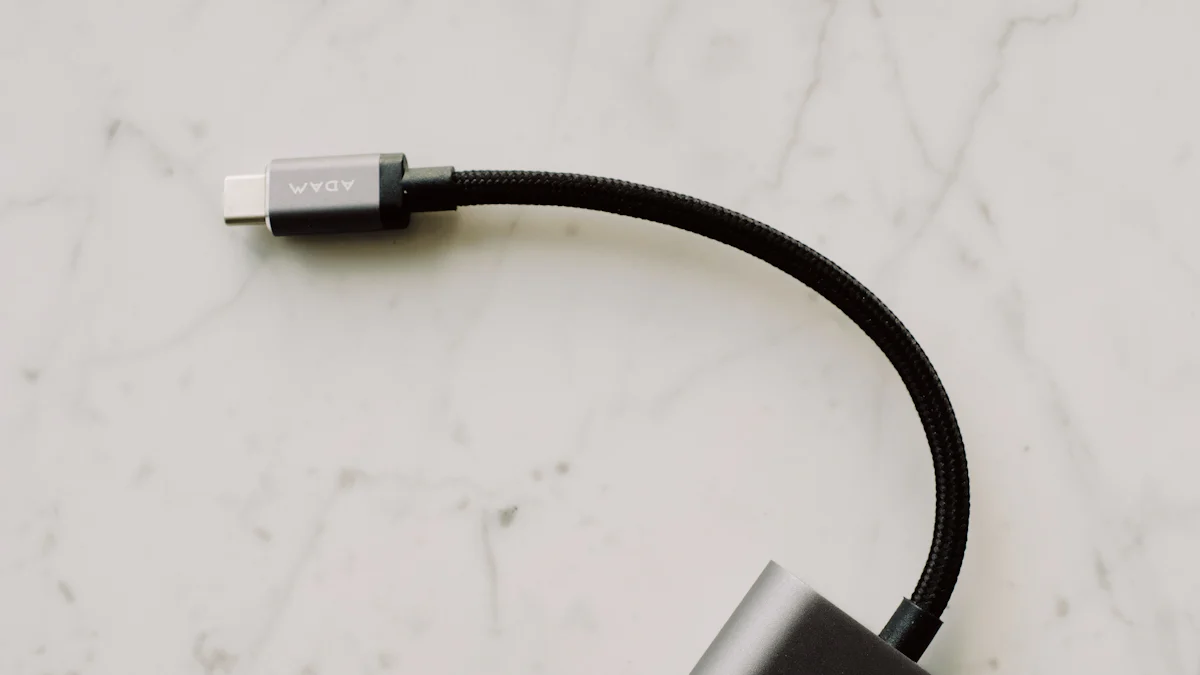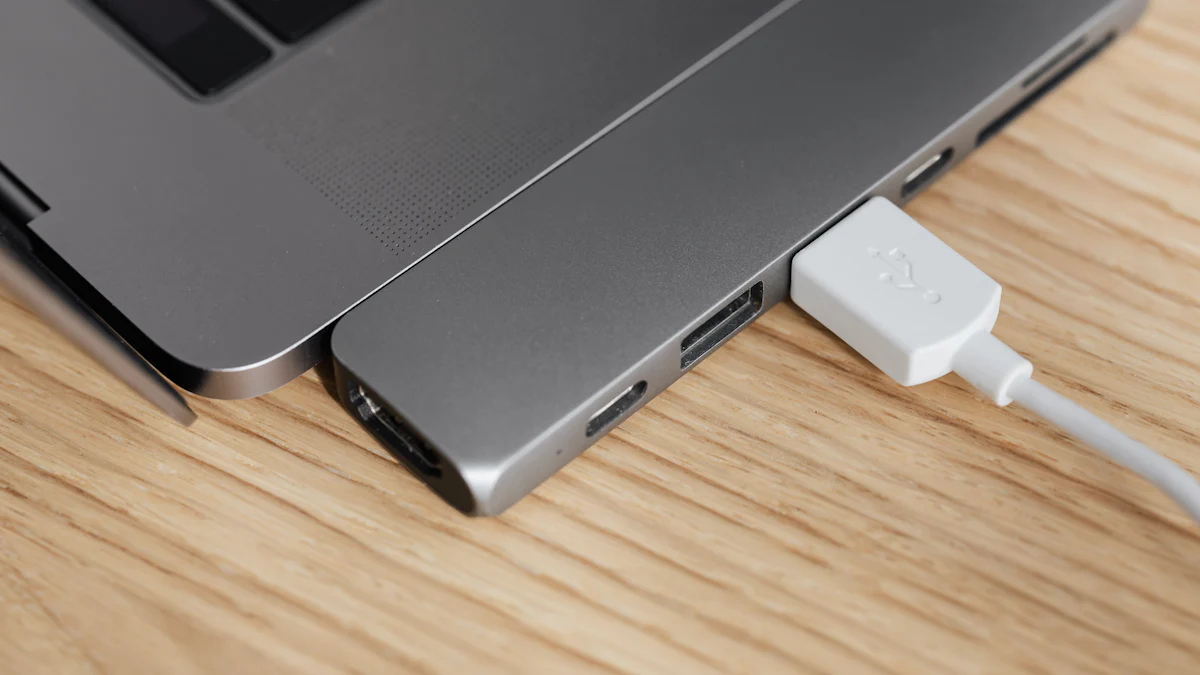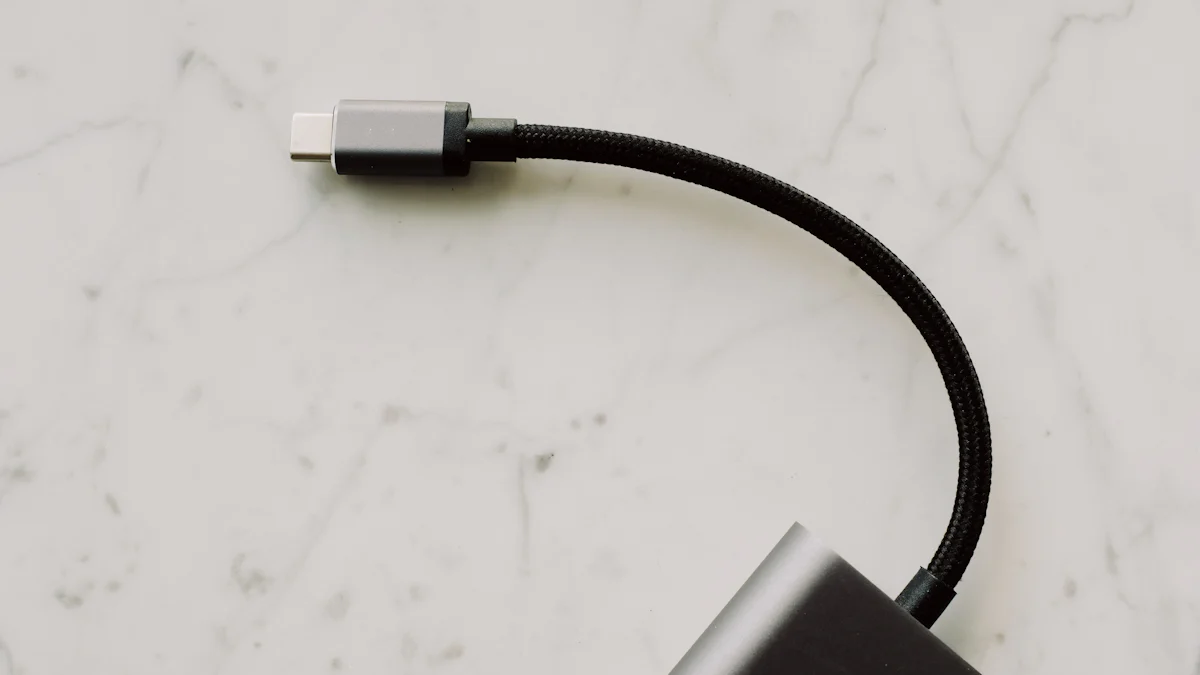3 Simple Ways USB-C Differs from USB

USB-C has revolutionized how you connect devices, highlighting the difference between USB and USB-C. Unlike older versions of the universal serial bus, USB-C offers a sleek, reversible design that eliminates the hassle of figuring out the correct orientation. Its compact shape fits perfectly into modern, slim devices like smartphones and ultrabooks. Beyond its design, USB-C delivers exceptional performance. It supports faster data transfer and higher power delivery, making it ideal for charging laptops or transferring large files.
The adoption of USB Type-C has skyrocketed in recent years, showcasing the difference between USB and USB-C. In 2021, nearly five billion devices featured at least one USB-C port, a massive leap from 300 million in 2016. This growth reflects its versatility and ability to replace multiple connection types with a single, efficient standard. Whether you need to transfer data, charge devices, or output video, USB-C simplifies your experience.
Key Takeaways
USB-C has a reversible plug, so it works both ways. This design saves time and avoids hassle.
The small size of USB-C is great for new devices. It is strong and lasts long. It fits well in thin gadgets like phones and laptops.
USB-C moves data faster, up to 40Gbps. This is great for big files or editing videos.
USB-C gives up to 100 watts of power for fast charging. It can charge laptops and other big devices. You don’t need many chargers anymore.
USB-C works with old USB devices if you use adapters. This makes it easy to switch to USB-C without throwing away old stuff.
Physical Design: The Key Difference Between USB and USB-C

Reversible Connector
You’ve likely experienced the frustration of plugging in a USB-A cable the wrong way. USB-C eliminates this issue with its reversible design. You can insert the connector in either orientation, saving time and effort. This feature proves especially helpful when you’re in a hurry or working in low-light conditions. The symmetrical design ensures a seamless connection every time, making USB-C far more user-friendly than older USB types.
Compact and Symmetrical Shape
USB-C stands out with its smaller, oval-shaped design compared to the bulkier, rectangular USB-A. This compact shape makes it ideal for modern devices like smartphones, tablets, and ultrabooks, where space is at a premium. The symmetrical design not only enhances usability but also contributes to the longevity of the connector. Unlike USB-A, which can wear out faster due to repeated incorrect insertions, USB-C’s design ensures durability.
Why USB-C’s design lasts longer:
Compact and reversible, reducing wear and tear.
Supports high-speed data transfer and power delivery.
Future-proof, ensuring relevance for years to come.
Universal Standard
USB-C replaces multiple connector types, including USB-A, USB-B, and USB Type-A, with a single, versatile design. This universal standard simplifies your experience by reducing the need for different cables and adapters. Whether you’re transferring data, charging a device, or outputting video, USB-C handles it all. Its versatility makes it the go-to choice for modern connectivity needs.
Tip: USB-C’s ability to combine multiple functions into one cable means fewer cords cluttering your workspace.
The difference between USB and USB-C becomes clear when you consider its design. USB-C’s compact, reversible, and universal design makes it a superior choice for today’s devices.
Speed and Performance: Why USB-C Outpaces USB

Faster Data Transfer
USB-C offers a significant leap in data transfer speeds compared to older USB standards. With USB4, USB-C can achieve speeds of up to 40Gbps, making it ideal for tasks like transferring large video files or creating backups. In contrast, USB 2.0 supports only 480 Mbps, and USB 3.0 reaches 5 Gbps. This difference highlights why USB-C is the preferred choice for high-performance tasks.
USB Standard | Maximum Speed |
|---|---|
USB 2.0 | 480 Mbps |
USB 3.0 | 5 Gbps |
USB 3.1 | 10 Gbps |
USB-C (with Thunderbolt 3) | 40 Gbps |
Industries like mobile phones, media tablets, and docking stations benefit greatly from USB-C’s faster data transfer speeds. For example, you can edit videos or play high-resolution games without delays, thanks to USB-C’s ability to handle large amounts of data efficiently.
Enhanced Power Delivery
USB-C also excels in power delivery. It supports USB Power Delivery (USB PD), which provides up to 100 watts of power. This capability allows you to charge larger devices like laptops and monitors quickly. Unlike traditional USB standards that offer a fixed 5V, USB-C can negotiate voltages of 5V, 9V, 15V, or 20V. This flexibility ensures that your devices receive the optimal power level for faster charging.
Why USB-C’s power delivery stands out:
Charges laptops, tablets, and even monitors.
Maintains high data transfer speeds while delivering power.
Reduces the need for separate power adapters.
Multi-Functionality
USB-C combines multiple functions into one cable. It supports data transfer, power delivery, and video output simultaneously. For instance, USB-C can handle video standards like HDMI, DisplayPort, and Thunderbolt through Alternate Mode. This versatility eliminates the need for multiple cables and adapters, simplifying your workspace.
Tip: Use USB-C for docking stations to connect your laptop to monitors, external drives, and other peripherals with a single cable.
The difference between USB and USB-C becomes evident when you consider speed and performance. USB-C’s faster data transfer speeds, enhanced power delivery, and multi-functionality make it a game-changer for modern devices.
Compatibility and Versatility: USB-C’s Edge Over USB
Multi-Protocol Support
USB-C stands out for its ability to handle multiple protocols simultaneously. This means you can use a single cable for video, audio, data, and power. For example, USB-C supports HDMI, DisplayPort, and Thunderbolt standards through a feature called Alternate Mode. This flexibility allows you to connect your laptop to an external monitor or transfer files while charging your device.
Here’s a breakdown of the technical specifications that make this possible:
Specification | Description |
|---|---|
Alternate Mode | Enables transmission of alternate data protocols like DisplayPort, MHL, VirtualLink, and Thunderbolt 3. |
Lane Utilization | USB-C has four lanes that can be used partially or fully for Alternate Mode data. |
Data Transmission | Allows simultaneous transmission of USB 3.1 data while using lanes for DisplayPort or other protocols. |
This versatility reduces the need for multiple cables, simplifying your workspace and enhancing your overall experience.
Growing Adoption
USB-C is quickly becoming the standard for modern devices. Major manufacturers like Apple, Google, and Microsoft have embraced USB-C across their product lines. For instance, Apple transitioned its MacBook lineup to USB-C, while Google uses it in Android smartphones.
Manufacturer | Adoption Details |
|---|---|
Apple | Transitioned to USB-C on MacBook lineup |
Included Type-C ports on Android smartphones | |
Microsoft | Adopted USB-C for various devices |
This widespread adoption reflects the growing demand for a universal connection standard. Many manufacturers are phasing out older USB ports like USB-A, streamlining product design and reducing production costs.
Backward Compatibility
One of USB-C’s greatest strengths is its backward compatibility with older USB devices. You can use adapters to connect USB-C to USB-A or other legacy ports. For example, a USB-A to USB-C cable allows you to plug older devices into newer USB-C hosts.
USB-C maintains electrical compatibility by supporting the same +5V, D+/D- signals, and SuperSpeed signals as older USB standards. Its pinout design ensures proper connections regardless of orientation. This feature ensures a smooth transition for users upgrading to USB-C, making it easier to adopt the new standard without discarding existing devices.
Note: The shift to USB-C also benefits the environment by reducing electronic waste. Standardizing charging ports minimizes the production and disposal of various cables, aligning with global sustainability goals.
The difference between USB and USB-C becomes even clearer when you consider compatibility. USB-C’s multi-protocol support, growing adoption, and backward compatibility make it a versatile and future-proof choice for modern connectivity.
USB-C stands out as a game-changer in connectivity, offering a sleek design, faster speeds, and universal compatibility. Its reversible connector eliminates frustration, while its ability to handle charging, data transfer, and video output simplifies your experience. The difference between USB and USB-C becomes clear when you consider its impact on user convenience and sustainability. By reducing electronic waste and streamlining production, USB-C benefits both consumers and manufacturers. With the global market for USB-C solutions projected to grow exponentially, this versatile connection standard is shaping the future of technology.
Note: USB-C adoption aligns with environmental goals, reducing e-waste by minimizing the need for multiple cables and chargers.
FAQ
What is the main advantage of USB-C over older USB types?
USB-C offers a reversible connector, faster data transfer, and higher power delivery. Its compact design works well with modern devices. You can also use one cable for multiple functions like charging, data transfer, and video output.
Can USB-C charge laptops and other large devices?
Yes, USB-C supports up to 100 watts of power through USB Power Delivery. This allows you to charge laptops, monitors, and other high-power devices quickly and efficiently.
Is USB-C compatible with older USB devices?
Yes, USB-C works with older USB devices using adapters. For example, a USB-A to USB-C adapter lets you connect older devices to newer USB-C ports. This ensures a smooth transition when upgrading.
Why is USB-C considered future-proof?
USB-C combines multiple functions into one cable and supports advanced standards like Thunderbolt and DisplayPort. Its growing adoption by manufacturers ensures compatibility with future devices, making it a long-term solution for connectivity.
Do all USB-C cables support the same features?
No, not all USB-C cables are the same. Some support only charging, while others handle data transfer, video output, and power delivery. Always check the cable specifications to ensure it meets your needs.
Tip: Look for certified USB-C cables to guarantee performance and safety.
See Also
Essential Differences Between CR1620 And CR2032 Batteries
Speed And Performance: eMMC Compared To SSD Storage
Exploring Various Capacitor Types And Their Unique Features
Choosing Between Power Banks And Wireless Chargers Effectively
